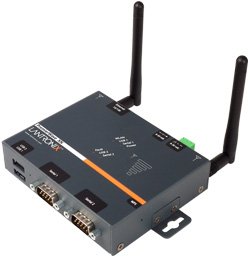Infrared radiation, also known as “IR,” is just one type of radiation that exists within the electromagnetic spectrum.
The radiation that is used in microwave ovens is a type of radiation
that has a place on the electromagnetic spectrum, while the radiation
that is used in hospitals to create X-ray images is another. The light
rays that allow humans to see the world around them and the radio waves that are used to deliver news and music are also types of radiation that exist within the electromagnetic spectrum.
Infrared radiation is so named because the wavelength
of infrared rays is just a bit longer than that of red rays. The only
types of radiation that humans can detect are light rays. If humans
could see infrared rays on the color spectrum, it would appear just
after or below red. The Latin infra translates to “below”.
Infrared
radiation is an incredibly important part of every human being’s life.
This is because IR is quite literally heat. Although human eyes cannot
visibly detect IR, they can surely feel it. Wrapping a hand around a cup
of hot chocolate, take a walk in balmy weather, or enjoy sizzling
fajitas; in all of these experiences are interacting directly with IR.
Although the human eye cannot detect radiation, scientists have
developed mechanical eyes that can. IR cameras can take pictures of
objects and beings that relay their topography in terms of the amount of
heat that they are giving off. For example, in an IR photo of a snake
eating a mouse, the cold blooded snake would be nearly invisible, but
humans would be able to see the thermal outline of the warm blooded
mouse.
There are many uses for infrared radiation cameras. They are used by
the military to gain information about a target or place of interest.
They are also used by astronomers to learn more about the cosmos.
Meteorologists also use cameras that are sensitive to IR in order to
predict temperatures and oncoming weather.
Subscribe to:
Post Comments (Atom)
-
Subtotal (Functions) The Subtotal function allows you to set up a calculation in your worksheet. Then, by filtering the data, the same...
-
Printing Options for Specific Pages You may not always want to print your entire Word document. There are times when you may want to p...
-
Aptoide is an open source approach to repositories in Android . With Aptoide you can create your own repositories of applic...


No comments:
Post a Comment